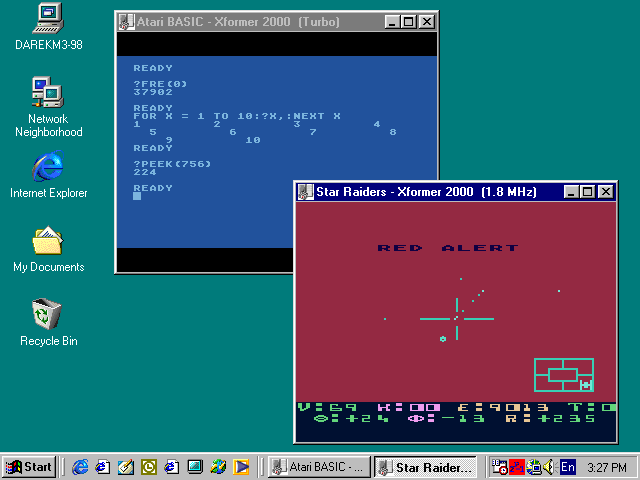

- Mac lc emulator install#
- Mac lc emulator zip file#
- Mac lc emulator android#
- Mac lc emulator series#
- Mac lc emulator mac#

XDA Developers was founded by developers, for developers. Step 6: If you see a listed device, you’re ready for the rooting process.
Mac lc emulator zip file#
You need to extract the zip file in your pc anywhere you want. Step-2 After setup is completed, you will see ADB folder on your C drive (C:\adb). If anyone is interested in the works or in these tablet's Hit me up. Try to send some commands to adb in this way “command” > adb shell or adb shell > and then System. Connect the phone to the computer via USB.
Mac lc emulator android#
By executing ADB command, you can extract data from broken Android with USB debugging. You have just started adb and it takes the input. ADB, or Android Debug Bridge, is a developer tool. Y: Availability of the JP5 tablets varies depending on the state, facility and other factors.
Mac lc emulator install#
Most of you might find it useless as you can install ROMs from the device itself, however, the Sideload mode is a life saver when it comes to a device with internal memory only and there is no ROM in the device to repair a. Keep in mind that it is VERY slow, sometimes upwards of a factor of 40x slower per clock than with a PowerPC (a 2Ghz p4 performs like a 40Mhz PowerPC.Jp5 tablet adb hack commands exe tool from your comupter command prompt.

PearPC PearPC is a 'new world' PowerPC emulator that is capable of running OS X. SheepShaver is good for emulating OS 8 & 9, for those that still need it. Please note that SheepShaver will *NOT* run OS X. SheepShaver emulates the first generation PowerPC Macintosh models. The main project page provides more up to date information.

Mac lc emulator mac#
Shoebill is a specialized Mac II emulator for running A/UX. While not as feature rich, it does networking tasks much more stabler than the newer versions of Basilisk II. I've been more focused on networking by adding libpcap and SLiRP support. Guides and compatibility tables and so on will be posted here later.Ĭockatrice III is an attempt to stabilize Basilisk II by turning to a much older version, and rebasing everything off of the generic drivers. See the Wikipedia article for more information. It's important to note that the emulator is highly customized toward running MacOS inside it, and will not handle AU/X or modern UNIXes written for 68k Macs. There is a development branch which emulates the Macintosh II.īasilisk II is the de facto official emulator of the MacOS 68k environment. It's 68000 only, and really suited for MacOS 1.x - 6.x, although 7 can run, it's not very useful in a maximum of 4MB of RAM. Mini vMac primarily emulates the old Macintosh Plus. We'll concentrate on emulating "old world" Power PC and Motorola 68k based Macs here. Today, both 68k and PowerPC Macs, as well as right up to the latest versions of OS X are all emulate-able, with varying degrees of ease. I used them to get a PowerMac 5400 back into action. There is a hack to alter the tool so it will, or the easier way out is to use the install diskettes from A/UX.Ī great resource for boot floppies can be found here. The SCSI partitioning tool that comes with all versions of MacOS will REFUSE to partition a NON Apple hard disk. it goes by a few names.Ī few notes for anyone trying to get an old Macintosh running. There were attempts at making them Prep/Chrp compliant however they never did run any 'standard' prep/chrp OS's.Ĭlassic 68k and PowerPC Macs are notable not so much for their hardware (though they tended to be more sophisticated and use higher-end components than other personal computers of their eras), but for their operating system, MacOS, Macintosh System Software. These were the first Macintoshes to feature a PowerPC CPU, starting with the PPC601, and going up to the 603. The first Quadras were the Quadra 700 and Quadra 900 which were released in 1991. These were the last models to feature the 68000 CISC CPU. The Quadras all featured 68040 CPUs and featured desktops, LC's and server models. Macintosh II's with an appropriate CPU/MMU combination can run NetBSD or A/UX. All models featured a SCSI bus, and they all had the ability to display color. The Mac II's were expandable unlike the first generation Macintoshes with NuBUS slots, and some models even had PDS (processor direct) slots.
Mac lc emulator series#
The Macintosh II series all had a 68020 or better CPU and ran System 4 through 7.5 depending on model.


 0 kommentar(er)
0 kommentar(er)
